Related Research Articles

The International Hydrographic Organization (IHO) is an intergovernmental organisation representing hydrography. As of May 2022, the IHO comprised 98 Member States.

Hydrography is the branch of applied sciences which deals with the measurement and description of the physical features of oceans, seas, coastal areas, lakes and rivers, as well as with the prediction of their change over time, for the primary purpose of safety of navigation and in support of all other marine activities, including economic development, security and defense, scientific research, and environmental protection.
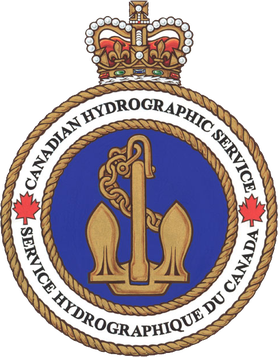
The Canadian Hydrographic Service (CHS) is part of the federal department of Fisheries and Oceans Canada and is Canada's authoritative hydrographic office. The CHS represents Canada in the International Hydrographic Organization (IHO).

The United Kingdom Hydrographic Office (UKHO) is the UK's agency for providing hydrographic and marine geospatial data to mariners and maritime organisations across the world. The UKHO is a trading fund of the Ministry of Defence (MoD) and is located in Taunton, Somerset, with a workforce of approximately 900 staff.

Admiralty charts are nautical charts issued by the United Kingdom Hydrographic Office (UKHO) and subject to Crown Copyright. Over 3,500 Standard Nautical Charts (SNCs) and 14,000 Electronic Navigational Charts (ENCs) are available with the Admiralty portfolio offering the widest official coverage of international shipping routes and ports, in varying detail.
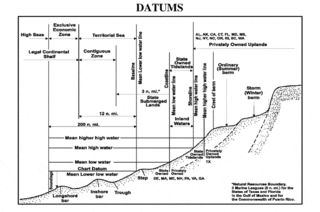
A chart datum is the water level surface serving as origin of depths displayed on a nautical chart. A chart datum is generally derived from some tidal phase, in which case it is also known as a tidal datum. Common chart datums are lowest astronomical tide (LAT) and mean lower low water (MLLW). In non-tidal areas, e.g. the Baltic Sea, mean sea level (MSL) is used. A chart datum is a type of vertical datum and must not be confused with the horizontal datum for the chart.
The Naval Oceanographic Office (NAVOCEANO), located at John C. Stennis Space Center in south Mississippi, comprises approximately 1,000 civilian, military and contract personnel responsible for providing oceanographic products and services to all elements within the Department of Defense.
A notice to mariners advises mariners of important matters affecting navigational safety, including new hydrographic information, changes in channels and aids to navigation, and other important data.
Nautical publications is a technical term used in maritime circles describing a set of publications, either published by national governments or by commercial and professional organisations, for use in safe navigation of ships, boats, and similar vessels. Other publications might cover topics such as seamanship and cargo operations. In the UK, the United Kingdom Hydrographic Office, the Witherby Publishing Group and the Nautical Institute provide numerous navigational publications, including charts, publications on how to navigate and passage planning publications. In the US, publications are issued by the US government and US Coast Guard.
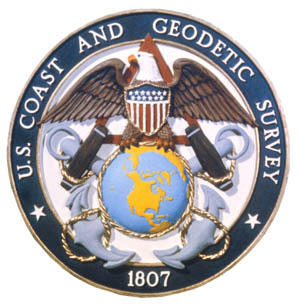
The United States Coast and Geodetic Survey, known from 1807 to 1836 as the Survey of the Coast and from 1836 until 1878 as the United States Coast Survey, was the first scientific agency of the United States Government. It existed from 1807 to 1970, and throughout its history was responsible for mapping and charting the coast of the United States, and later the coasts of U.S. territories. In 1871, it gained the additional responsibility of surveying the interior of the United States and geodesy became a more important part of its work, leading to it being renamed the U.S. Coast and Geodetic Survey in 1878.
The Office of Coast Survey is the official chartmaker of the United States. It is an element of the National Ocean Service in the National Oceanic and Atmospheric Administration, which is part of the United States Department of Commerce.
The Naval Hydrographic and Oceanographic Service is a French public establishment of an administrative nature administered by the Ministry of Defence. It is the successor to the Dépôt des cartes et plans de la Marine, founded in 1720 which became the Naval Hydrographic Service in 1886 and the Naval and Oceanographic Service in 1971. Its present form was set up by decree number 2007-800 on 11 May 2007. Its board is presided over by the Chief of Staff of the French Navy and the body is directed by a director-general.
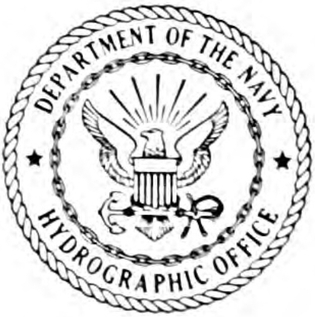
The United States Hydrographic Office prepared and published maps, charts, and nautical books required in navigation. The office was established by an act of 21 June 1866 as part of the Bureau of Navigation, Department of the Navy. It was transferred to the Department of Defense on 10 August 1949. The office was abolished on 10 July 1962, replaced by the Naval Oceanographic Office.
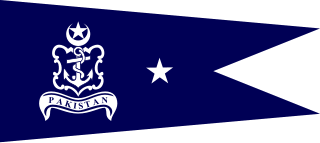
The Pakistan Navy Hydrographic Department, is an active-duty and non-combatant naval administrative staff command, and one of the major science and technology command of the Pakistan Navy. The command served as the operational scientific naval oceanographic program for the Government of Pakistan and jointly conducts research and development programs with civilian National Institute of Oceanography.
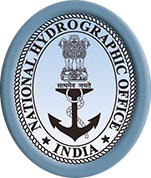
The Indian Naval Hydrographic Department (INHD), headed by the Chief Hydrographer to the Government of India, is an Indian government agency responsible for hydrographic surveys and nautical charting in India. Its headquarters National Hydrographic Office is located in Dehradun, Uttarakhand beside the Principal Controller of Defense Accounts Office. Presently, the department is equipped with Seven indigenously built survey ships including a catamaran hull survey vessel (CHSV). The National Institute of Hydrography is the training institute to impart knowledge regarding hydrography and to train its personnel. Two more ships are currently being constructed and is expected to be commissioned into service by 2025-26.

Rear Admiral Raymond Stanton Patton was the second Director of the United States Coast and Geodetic Survey and a career officer in the United States Coast and Geodetic Survey Corps, the predecessor of the National Oceanic and Atmospheric Administration Commissioned Officer Corps. He was the first Coast and Geodetic Survey Corps officer to reach flag rank.

The Russian Hydrographic Service, full current official name Department of Navigation and Oceanography of the Ministry of Defence of the Russian Federation, is Russia's hydrographic office, with responsibility to facilitate navigation, performing hydrographic surveys and publishing nautical charts.
The Hydrographic Institute of the Republic of Croatia is a government agency responsible for providing hydrographic and marine geospatial data for the Republic of Croatia. The institute is located in Split, and covers scientific research and development, services related to the safety of navigation, the hydrographic-geodetic survey of the Adriatic sea, marine geodesy, design and publication of nautical charts and books, oceanographic research, and submarine geology research. The Croatian Hydrographic Institute is responsible for the development of navigational safety service in the Adriatic, within the worldwide navigational safety system, and in cooperation with the Ministry of the Sea, Transport and Infrastructure, port authorities, the Croatian Navy, lighthouse authorities, and hydrographic offices of all maritime countries, following internationally agreed standards.
References
- ↑ "Press release, ninth January 2005" (PDF). www.ukho.gov.uk. UKHO. Archived from the original (PDF) on 28 September 2007. Retrieved 15 November 2006.
- ↑ "US Navy Hydrography Is Back!", Hydro International, May 2002, Volume 6, Number 4, accessed 31 October 2013
- Ehlers, P. (1999). Die Geschichte maritimer Dienste in Deutschland - Das BSH und seine Vorgänger. Retrieved Oct. 14, 2003 from http://www.bsh.de/de/Das%20BSH/Organisation/Geschichte/Geschichte.pdf
- Swedish Maritime Administration (2003). Swedish Maritime Administration - Accessibility, Safety, Environment. Retrieved Oct 15, 2003 from http://www.sjofartsverket.se/tabla-a-eng/pdf/tabla-a-eng.pdf